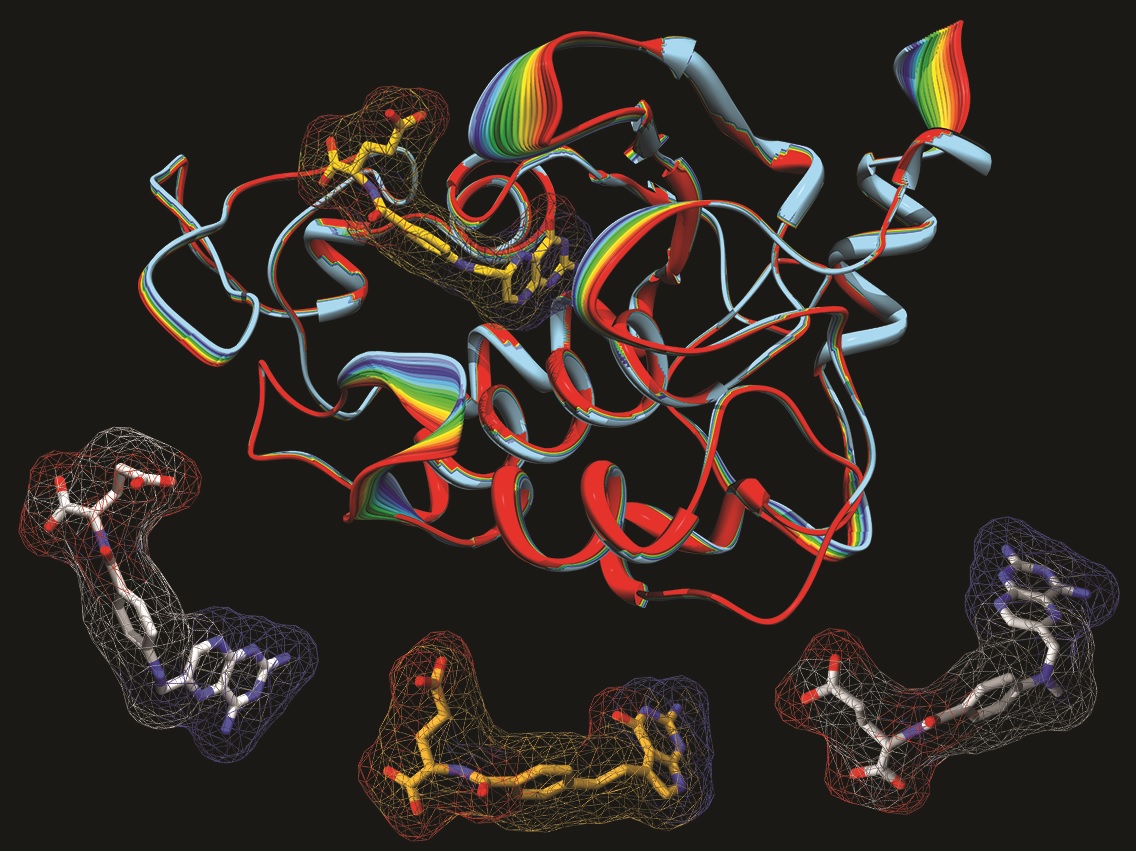Human Folate Receptor Model May Aid Antifolate Drug Design
Posted on by Dr. Francis Collins

Caption: A model of the human folate receptor (top) and three antifolate drugs used in chemotherapy: aminopterin (left), pemetrexed, and methotrexate (right).
Credit: Charles Dann III / Courtesy of Indiana University
Vitamin B9 or folic acid, which is found in dark green leafy vegetables, is essential for cells to grow and divide rapidly—as they do in a growing embryo. This is why women are advised to take folic acid supplements before conception and during pregnancy: inadequate folate raises the risk of brain and spinal cord defects. But while folic acid is key to normal cell growth, rapidly dividing cancer cells also have a tremendous appetite for this vitamin.
Drugs called antifolates have been used for decades in chemotherapy to starve cancer cells of folate, which can help kill the tumor. These drugs have also been used to treat inflammatory diseases like rheumatoid arthritis and Crohn’s disease. But many of these drugs have nasty side effects because they also enter normal healthy cells, depriving them of this essential compound.
With NIH funding, researchers at Indiana University, Bloomington, have figured out the structure of the human folate receptor protein—which behaves like a scavenger and allows folate to enter the cell. The structure of this protein (the rainbow colored ribbon above) will help researchers design the next generation of antifolate drugs that block folate receptors on cancer or disease causing immune cells, with a reduced chance of disturbing folate activity in healthy cells.
Reference:
Structures of human folate receptors reveal biological trafficking states and diversity in folate and antifolate recognition. Wibowo AS, Singh M, Reeder KM, Carter JJ, Kovach AR, Meng W, Ratnam M, Zhang F, Dann CE 3rd. Proc Natl Acad Sci U S A. 2013 Aug 9.
NIH support: National Institute of General Medical Sciences; National Cancer Institute

I want to know whether there’s any chance high intake of folate invites cancer.
Does too much folate consumption increase risk of getting cancer?
If a women does not take folic acid during pregnancy, what is it going to cost her?
Great information. I hope you will write another good post.